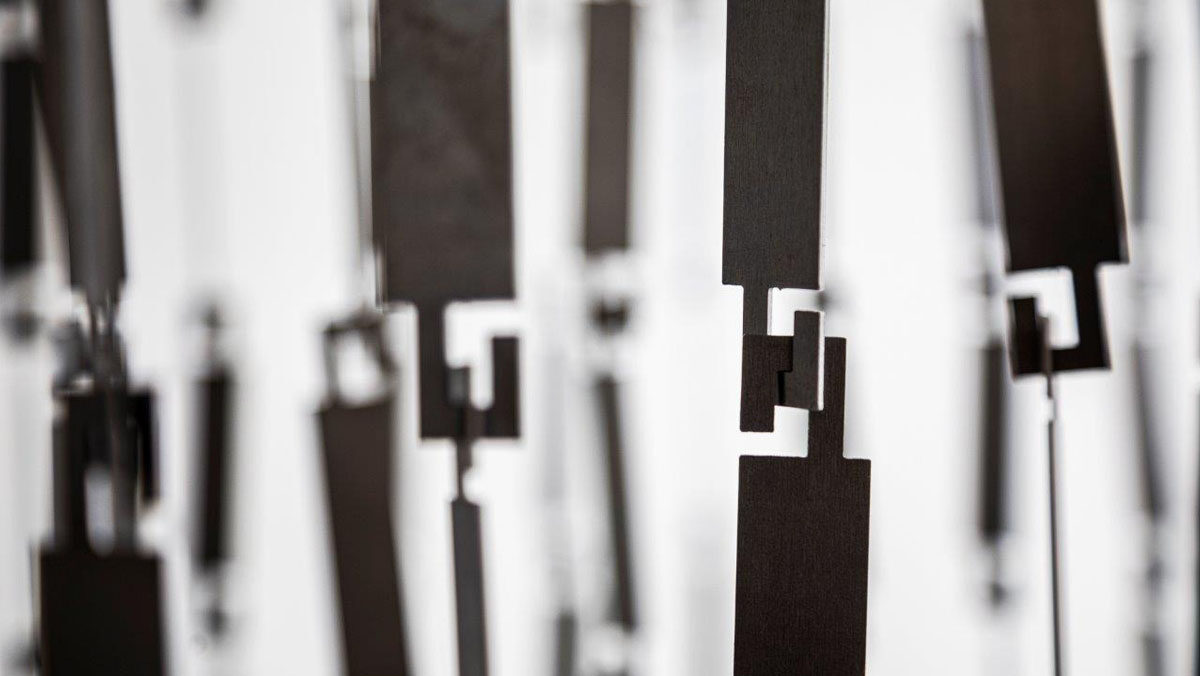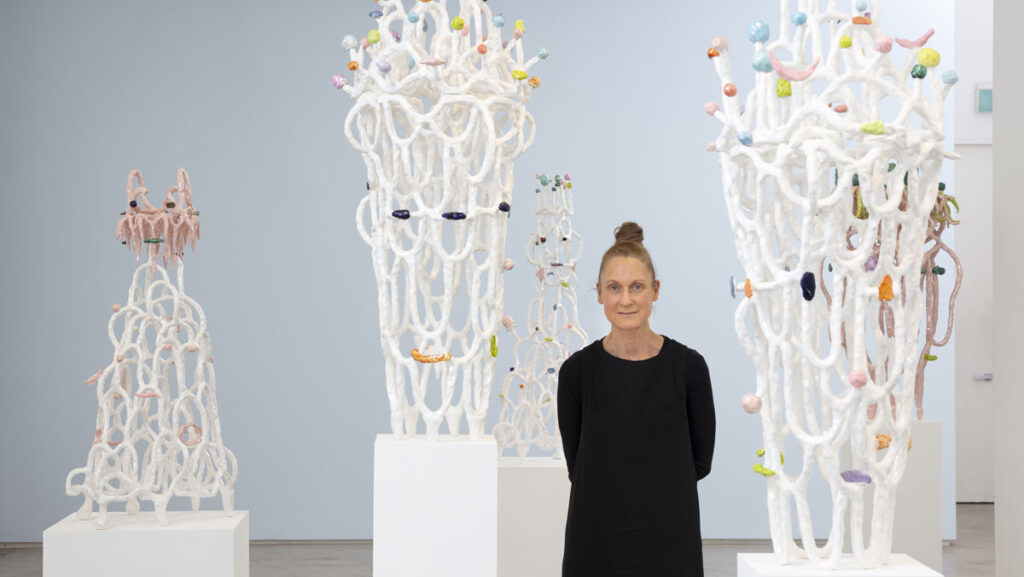Oblivion (2022)
Oblivion, a work on paper, is diametrically opposed to Iron Waterfall; closer inspection reveals faint marks inscribed into the paper by the artist (from the front? from the back?). They recall water or blood veins, or bronchial tubes, plant life or the fine cracks on oil paintings (craquelure).
Although Marko Marković allows space for free interpretation, the work evokes water or some other liquid. There is a tension between Oblivion and Iron Waterfall, but we should also remember that the word oblivion means “forgotten”, recalling the “Lethe”, the river of forgetting from Greek mythology. This context may bring to mind Heraclitus’s formula of panta rhei (everything flows) and his theory of flux which, all difficulties of interpretation aside, points to the principle of the world’s process quality: existence is not static, but in constant flux. It is worth noting that the following quote is also attributed to Heraclitus: “War is the father of all, king of all. He renders some gods, others men; he makes some slaves, others free.” Even without venturing further interpretation of this quote, the close link that Heraclitus establishes between change and war is striking.
Marko Marković’s work also carries associations of illusion and lies; at first sight this work on paper appears to be a large, blank, white sheet. He may be suggesting that the act of forgetting can manipulate the circumstances of past events. Perhaps he is even referring to the narratives of great powers, which are highly susceptible to exploitation, especially in times of war. Here, too, there are ambivalences, rendering a clear interpretation not just impossible but also undesirable.
Performance art forms the core of Marko Marković’s work. In a highly interesting 2016 interview with Srđan Sandić, the artist says: “Performance is a very difficult, complex medium, many people do not understand it, even performance artists have trouble understanding it. So they explore, question, test and practice performances, they don’t sleep and they break their necks. For me personally, it’s a never-ending race for something that appears unattainable, like an ideal or a vision that you seize, that flies away and that you have to keep chasing after. I began my research and experimentation in performance out of pure curiosity, so over time I went through different types of performance […]”
Marko Marković is interested in processes of transformation between the individual and society, in which he questions the relationship between inferiority and superiority in particular, and between power and powerlessness. He regards social and collective commitment, and rebellion, as vital elements. Beings that have been driven out of their natural environments, dwelling together in foreign countries under extreme living conditions, are linked by a common experience and their instinct for survival. When injustice occurs, it is the duty of a democratic society to react and intervene. In this respect, the artist believes, art can be a good “weapon”.
As an artistic researcher, Marko Marković is particularly concerned with the relationship between performer and audience, where the audience itself can become a performer in the space of the social network. Marković’s art is influenced by the desire to exist in different places at the same time, in parallel worlds, as it were. They merge with each other in the space of socio-political relationships, vague intimacies and concealed, invisible insincerities. As these worlds blend, they transform the perception and experience of what identity is or can be.
Marković also transfigures everyday actions in performance to distort our sense of reality. Influenced by some inner destructive impulse, he deconstructs the relationship to the body as a subject and explores his own physical and psychological limits as well as the audience’s limits of what is acceptable. No less important is his work with the concept of the “extended body”, within the technology available to us today. He deploys extremes of radical excess, which in certain aspects recall Viennese Actionism, yet go beyond them. Marković is also consistently drawn to provocation, using it to gain media exposure, to make a political impact and thus lend more weight to his protest actions.
Video recordings of the following three performances are on view in the upper part of the Stadtraum:
Work Saves (2010)
In this performance, Marko Marković sticks pins in his bare chest. These are pins bearing the logos of Croatian companies that have declared bankruptcy, some of them highly important businesses. The artist used this protest performance, which he carried out in various spaces in Split (public areas, galleries, festivals, etc.), to draw attention to grievances in his country.
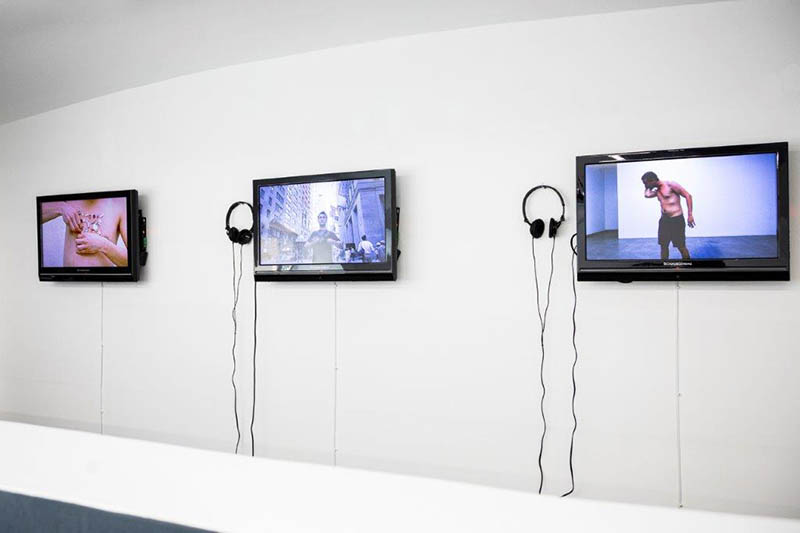
Sharpening (2012)
For this performance, carried out in New York City’s financial district, Marko Marković whetted two large kitchen knives against each other in the middle of the pavement. Prior to the performance, the artist applied to the city’s police department for a permit to carry a knife in the “Wall Street Security Zone”. In the wake of the Occupy Wall Street protests, pedestrians are strictly forbidden from even standing still in the security zone, which is ringed by police barricades. Through his performance, the weapon ceased to be a weapon, instead becoming an instrument for an artistic act. Nevertheless, the security personnel of some of the nearby banks and insurance companies tried unsuccessfully to halt the lawful action. And a police officer told the artist, “Watch your step because I have real bullets in my gun and I’ll be keeping an eye on you”.
While Marko Marković doesn’t do anything to his body in a direct sense during the performance, he still places it in danger. In so doing, he tests the security system of one of the most significant financial centres in the world. Despite the focussed, serious expression he adopts during the performance, he may also be making fun of his surroundings – in any case, the scene has something slapstick about it, eliciting a smile from some viewers. But it is also a work of protest, a symbolically threatening gesture that could be interpreted as a warning to the corrupt financial world.
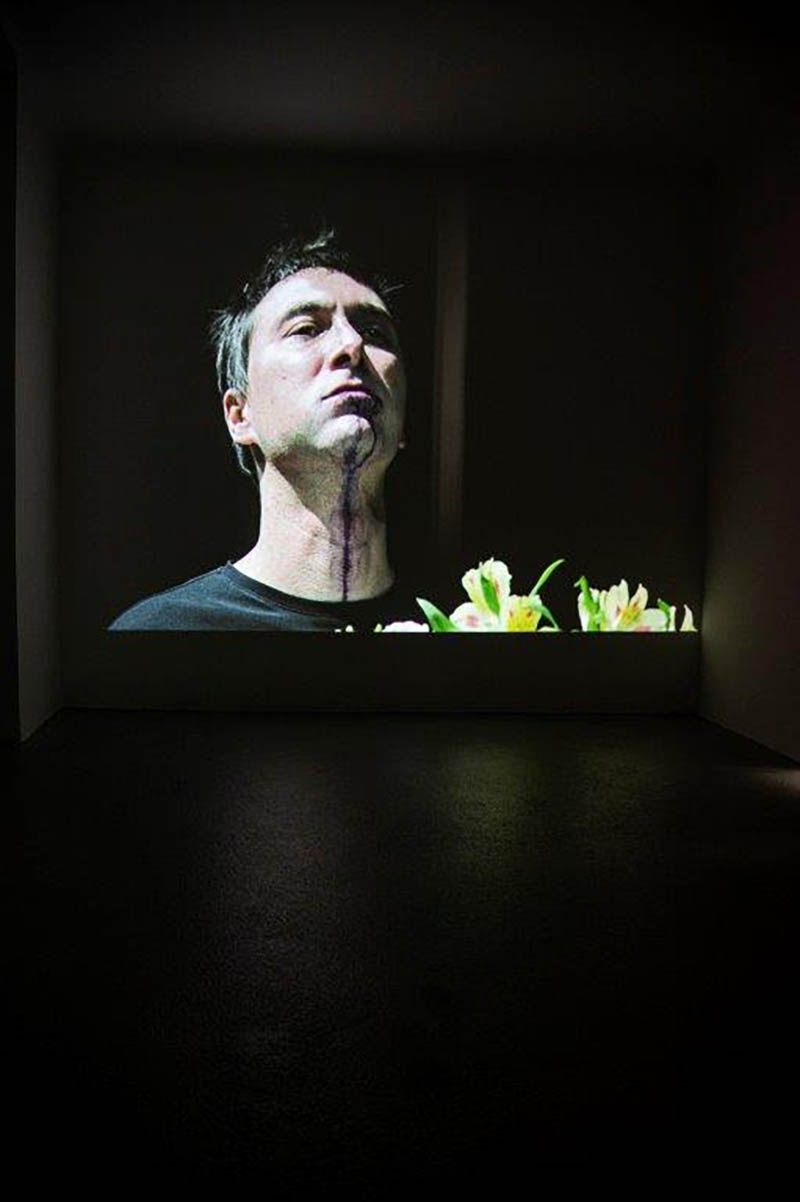
Marko Marković 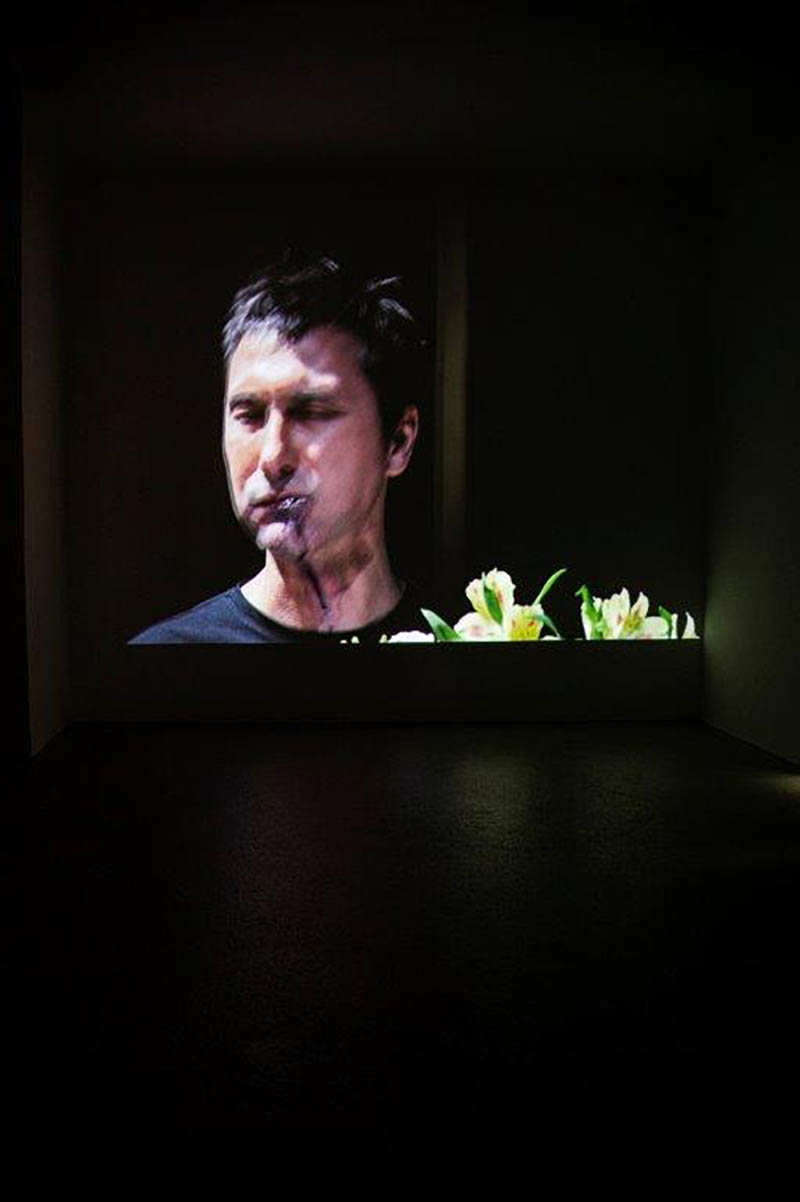
Marko Marković
Selfeater / Injury at the work (2014)
Selfeater, a series of body art performances in which Marković consumed his own blood and flesh, arose between 2008 and 2009. Extreme body art techniques test the artist’s concentration and stamina, exploring the potential of one’s own body and ultimately arriving at the limits of the physically and mentally possible. This, again, was a protest in response to the social conditions in Marković’s country at the time. The work attracted vehement responses, with opinions ranging from positive to negative.
It is also worth noting that these performances and the scientific research conducted by Suzana Marjanić at the Institute of Ethnology and Folklore in Zagreb substantiated the terminology of autocannibalism. Marković’s work is in turn documented as a relevant contribution to the Croatian performance scene.
In the performance Selfeater / Injury at the work, which Marković presented in 2014 at the MMSU – Museum of Modern and Contemporary Art Rijeka, the artist bit himself. He then went to the hospital and tried, unsuccessfully, to claim his wounds as an occupational accident and receive social benefits. With this unique case, Marković aimed to put the Croatian health and social security system to the test and highlight the precarious position of artists.
Southeast sadness in Central Europe (2021)
In the smaller side room on the ground floor of the Stadtraum, Marko Marković presents the video of one of his most recent performances entitled Southeast sadness in Central Europe. It is a project that the artist has continued to develop over many years, culminating in 2021 in his hometown Osijek. In an environment which is staged theatrically, aesthetically and decoratively, Marković eats fragrant flowers. The saliva soon mixes with the red flower juice and the resulting liquid resembles blood, which begins to seep from his mouth. The ingestion of poisonous flower enzymes gradually induces nausea, causing the artist’s facial expression and overall posture to alter dramatically. Towards the end of the performance he makes guttural noises. Marko Marković is primarily interested in the responses that his performance causes in the viewer as “empathic resonance”, especially in the latter part of the performance, in which he is seized by vomiting fits.
Flowers are commonly perceived as beautiful. More precisely, in this case, the flowers are specimens cultivated for sale as dead, partly artificial goods; for Marković they symbolise manifestation of power. The action can also be interpreted as the consumption of artificial beauty, which is offered in abundance in our capitalist system but can also be lethal. Finally, the artist once again uses powerful images and disturbing sounds as a means of protesting against injustices in his country.
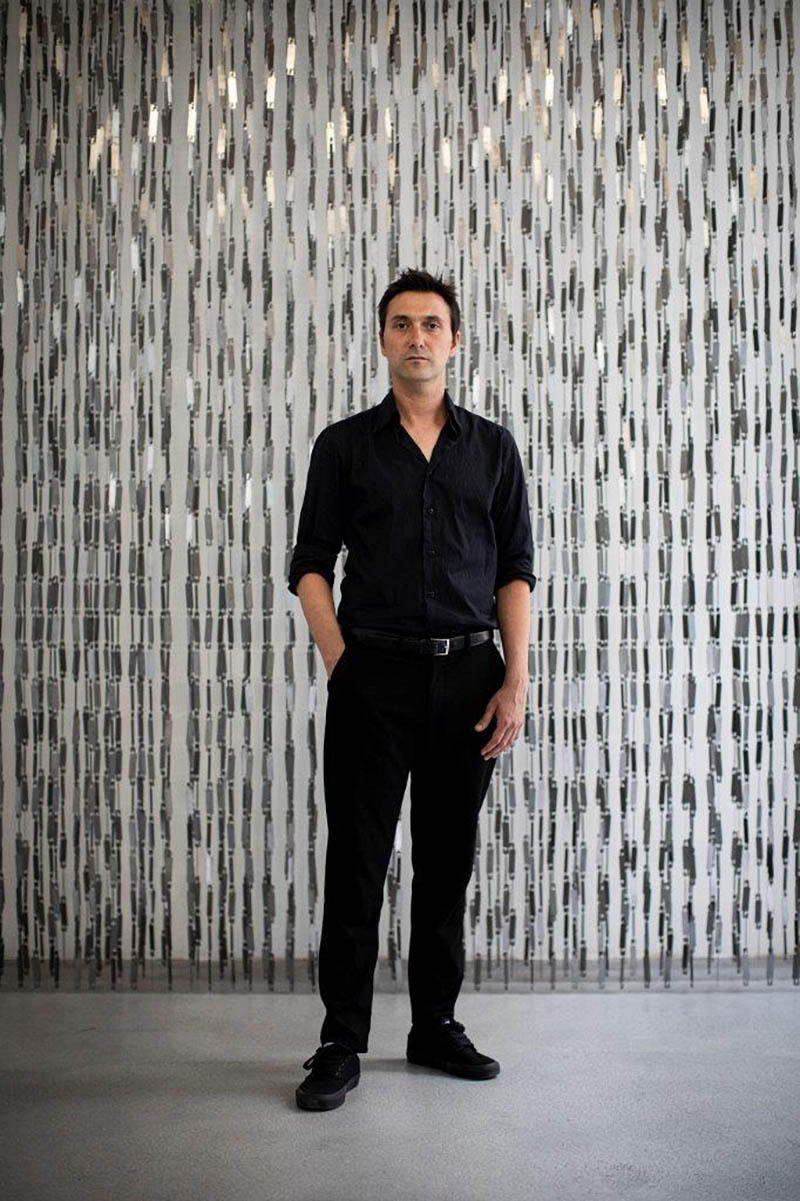
In October, Marko Marković and art historian Eva Badura-Triska will hold a talk, moderated by the curator of the exhibition, which will explore some of these aspects in greater detail. Between 1979 and 2019, Eva Badura-Triska was Curator at mumok – Museum of Modern Art Ludwig Foundation Vienna. One of the focal points of her research is Viennese Actionism.
Exhibition: Marko Marković – Iron Waterfall curated by Marcello Farabegoli
Exhibition duration: 22 June – 29 July & 6 September – 28 October 2022
Talk on 5 October at 6 p.m. in the Sammlung Friedrichshof Stadtraum between Marko Marković (artist) and Eva Badura-Triska (art historian and curator, formerly mumok) moderated by Marcello Farabegoli (Curator Sammlung Friedrichshof).
Address and contact:
Sammlung Friedrichshof Stadtraum
Schleifmühlgasse 6/11, 1040 Wien
www.sammlungfriedrichshof.at
Marko Marković graduated in Painting at the Academy of Fine Arts in Split and the pedagogical section of the University of Zadar. He also holds a master’s degree in Art & Science from the University of Applied Arts Vienna, returning later to work in the same department as the Programme Coordinator for the European Capital of Culture Rijeka 2020. He has been a guest lecturer at the UDK Berlin, at the IZK/Institute for Contemporary Art Graz, the Academy of Arts Zagreb and at the University of Applied Arts Vienna, as well as an independent curator in cooperation with MMSU – Museum of Modern and Contemporary Art Rijeka and mumok – Museum of Modern Art Foundation Ludwig Vienna. In 2022, Marko Marković presented his performance Southeast sadness in Central Europe at the Prague Biennale.
As an independent curator and artistic producer, Marko Marković focuses on cultural exchange with educational platforms in the field of performance art as part of the international performance festival DOPUST/Days of Open Performance (2008 to 2018, Croatia, USA and Austria). In 2011 he received the YVAA/Young Visual Artist Award. He has worked in art and film production as Project Coordinator at Matthew Barney’s studio in New York (2012-2014). In 2014, Marković held a major solo exhibition at MMSU – Museum of Modern and Contemporary Art Rijeka, and he has also presented his works at the 15th International Architecture Exhibition – La Biennale di Venezia (2016), at the International BiennaleMoscow (2016), and at the Biennale Sessions Giardini – La Biennale di Venezia (2019) and Prague Biennale (2022).



